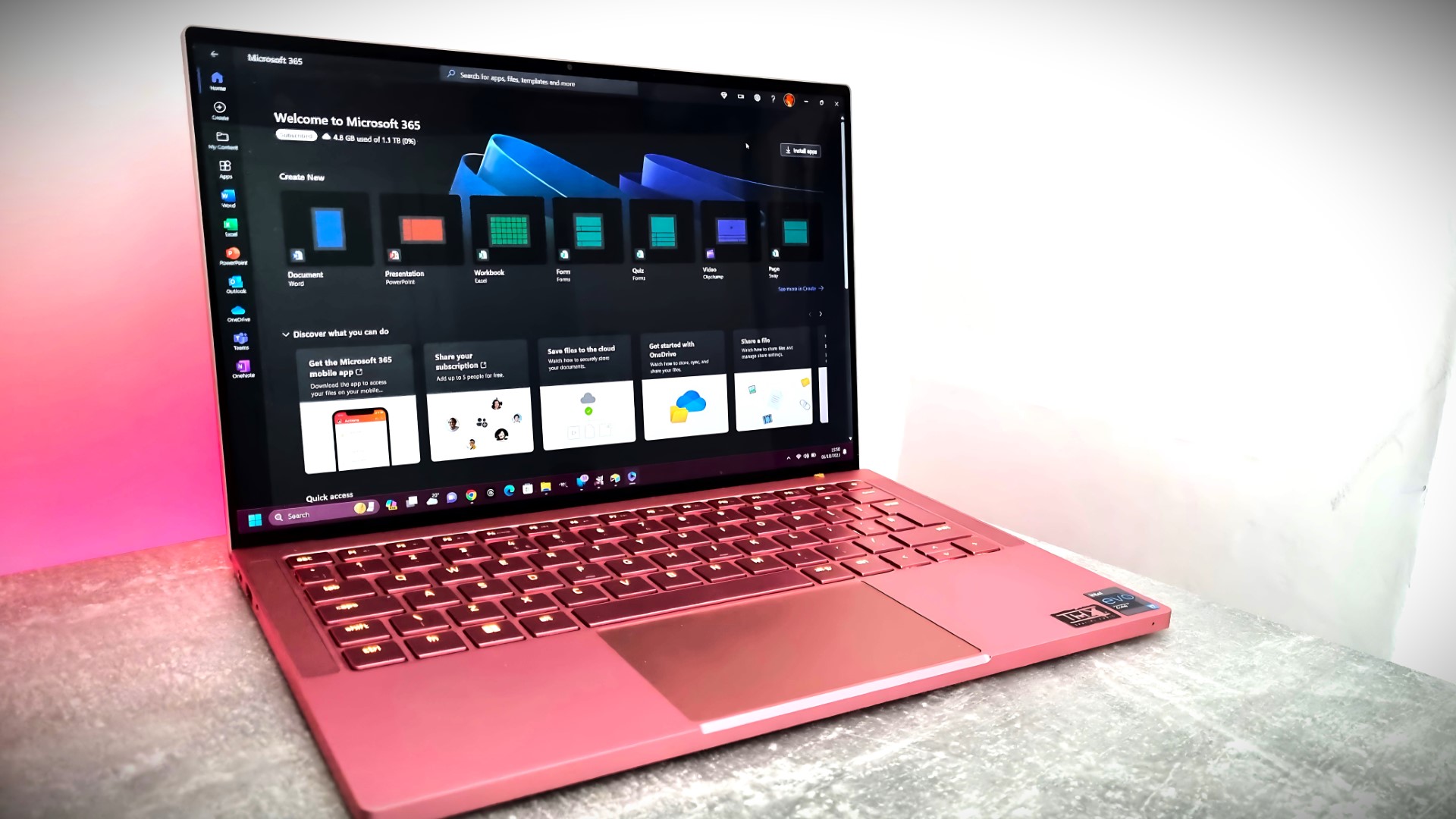Windows 10 Mobile should've been Microsoft's bridge to the future — not an afterthought
Microsoft's Universal Windows Platform (UWP) is pointless without a mobile component. Someone needs to let the company know this ASAP.
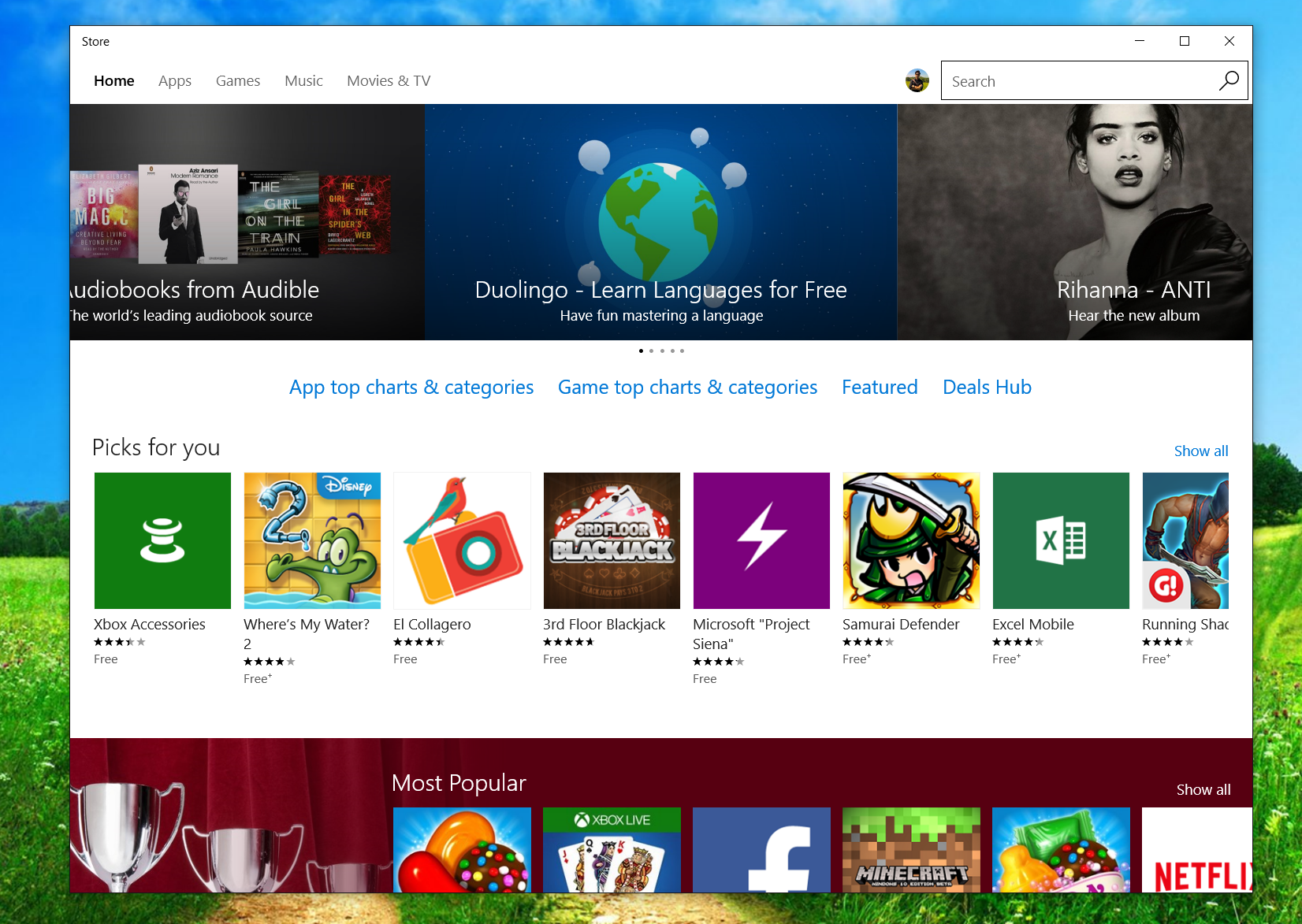
If Microsoft truly wants the Windows Store to be anything more than a vanity project in the coming years, it needs to outline the store's value beyond the desktop screen sooner rather than later.
Microsoft is proving to be a company that has amazing ideas and headline-worthy demos, while being consistently bad at bringing them to market. Now that Samsung has trounced Windows 10 Mobile to the mainstreaming of Continuum with DeX, and the arrival of the "Microsoft Edition" Samsung Galaxy S8 in Microsoft Stores, Redmond is effectively telling us that Windows 10 Mobile has no business even existing.
But here's the thing: For the Windows Store to be anything more than an extra hoop to access services available on the desktop web, UWP needs a mobile endpoint. Otherwise, UWP might as well be thrown onto the scrapheap along with Windows 10 Mobile.
Waiting for a paradigm shift is folly
Yes, I know UWP will support future paradigms, such as Windows Mixed Reality, but Microsoft hasn't given us much reason to think that it can beat Apple or Google to the mainstreaming of the technology first. To both developers and users, the technology doesn't matter as much as the ecosystem. So far, augmented reality's biggest app is Pokémon Go, which we all know isn't (and probably won't ever be) available on Windows 10.
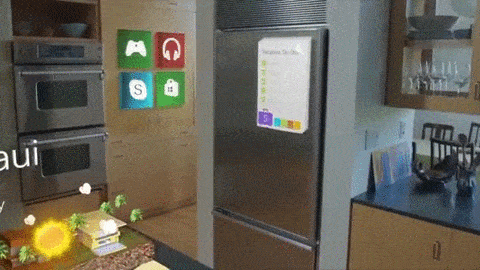
HoloLens was unveiled back in 2015. It's available at a premium for developers at the moment, with third-party consumer solutions on the way. Microsoft recently announced that Windows Mixed Reality sports a "whopping" 150 apps so far, which I'd argue isn't particularly impressive considering UWP apps are supposed to be platform agnostic. What's taking so long?
Every day, the march of technology makes Windows on desktop PCs less and less important.
It's slightly hyperbolic of me to write off Windows Mixed Reality as an endpoint with UWP, but with Windows 10 Mobile's slow demise, the Windows division has told developers that it's a company that throws in the towel. If Microsoft has given up on its mobile endpoint, who's to say it won't give up on Mixed Reality, too? Whether that's a fair point to make or not, it's the signal Microsoft is giving developers, consumers, and the media. Apple and Google have the mobile ecosystem to back up any paradigm shift in this space, while UWP languishes at the back, largely ignored and unaccounted for.
We can only speculate about the value of UWP holograms as an entity in the future, but at least for the long-term foreseeable future, PCs and smartphones are right now and firmly here to stay. And every day, the march of technology makes Windows on desktop PCs less and less important. The way Microsoft has complacently opted to "retrench" and stop investing in its own ecosystem exudes a lack of foresight on the same scale as Steve Ballmer's snobbery towards the first iPhone.
All the latest news, reviews, and guides for Windows and Xbox diehards.
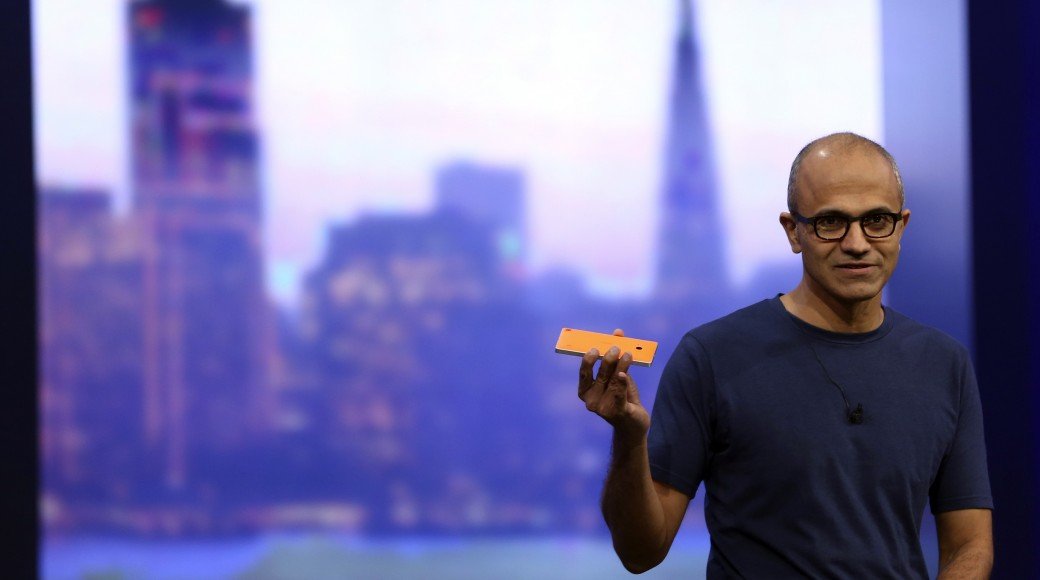
Microsoft is clearly waiting for the next paradigm shift before proposing another jaunt in the mobile space, but when that paradigm shift comes, nobody will care if the ecosystem isn't there to back it up.
UWP on desktop is weak
As much as I personally enjoy them, I'm willing to bet that it's only a very small percentage of Windows 10's hundreds of millions of reported users that know what a "live tile" is, let alone UWP's other unique features. Microsoft isn't actively marketing the Windows Store's intrinsic value on the desktop, and maybe, that's simply because it doesn't have a great deal of value.
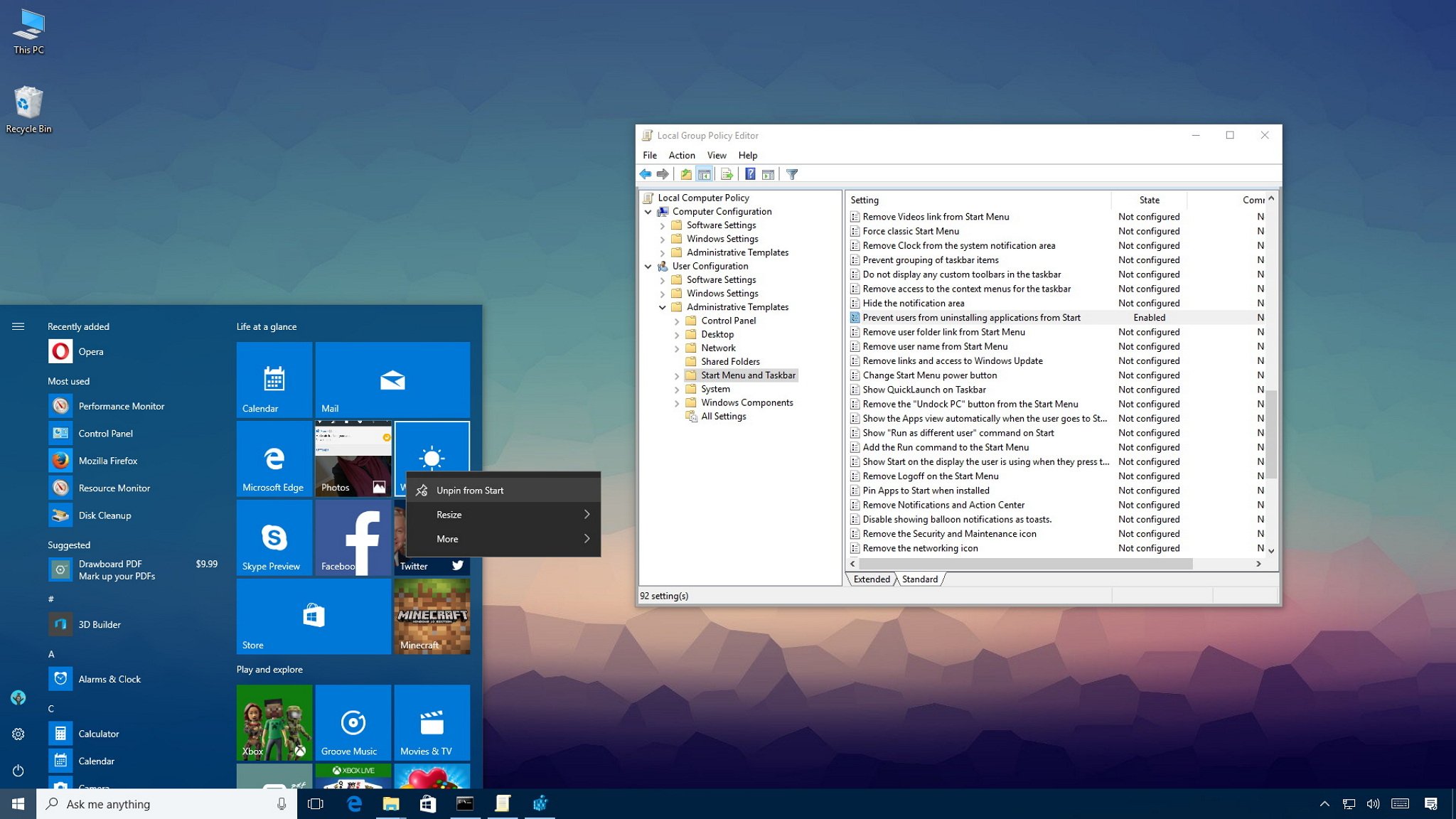
As a fan of live tiles, actionable notifications and the like, UWP apps on the desktop are far from a necessary, "killer" feature, which speaks to why the Store has seen very little traction despite the OS's install base. There's certainly no real evidence that the Windows 10 Store is seeing a huge amount of usage.
UWP apps on the desktop are far from a necessary, "killer" feature.
If the hundreds of millions of reported Windows 10 users were actively downloading and using UWP apps, surely we'd see far more big-ticket items in the Store than we have so far. While the inclusion is welcome, it speaks volumes that Facebook couldn't be bothered to provide a native solution for its services, giving us clunky OSMeta iOS ports that don't even make use of UWP's unique features. And even then, Facebook.com provides a better experience on a laptop than its app.
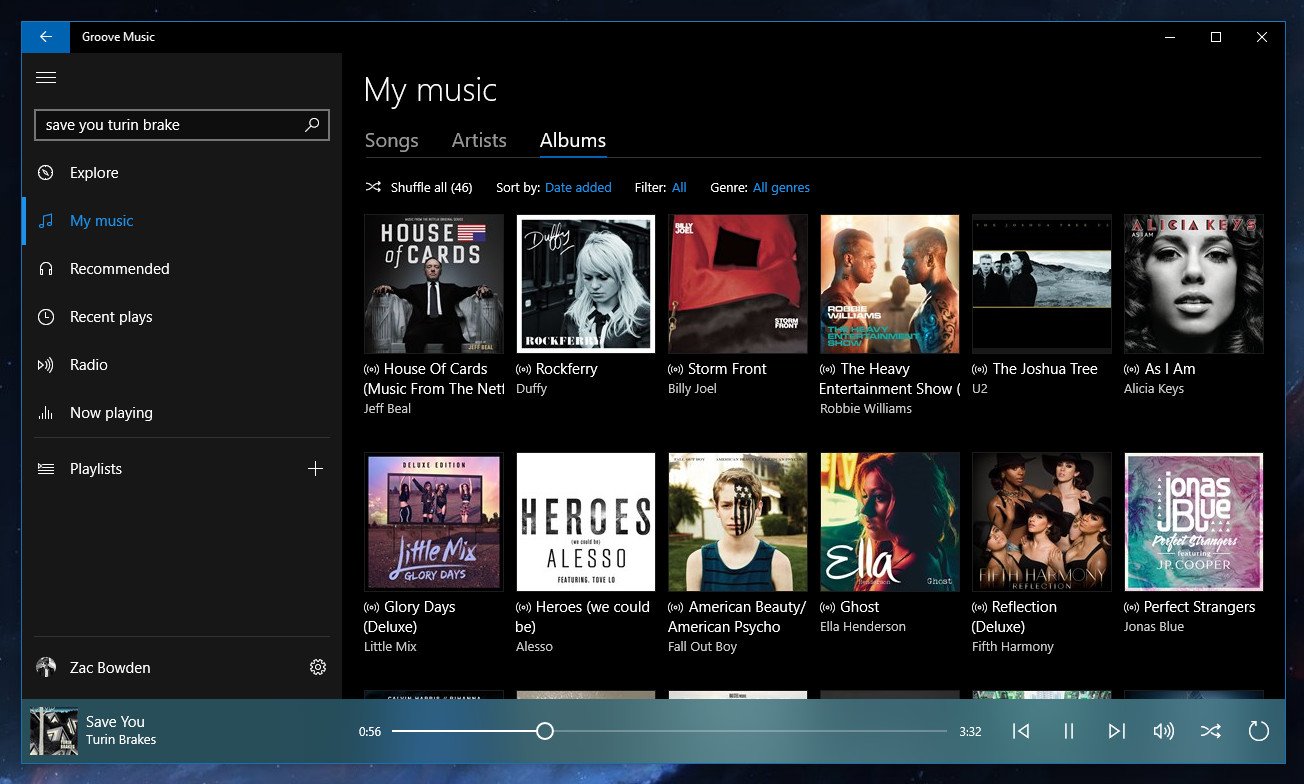
A huge amount of desktop UWP apps in the Windows 10 Store needn't exist. Facebook, Instagram, Netflix, Slack, YouTube, Twitter, and even Microsoft's own apps like OneNote and Groove Music, either have websites, more feature-rich Win32 desktop versions, or they face vicious competition from rival, web-based services. Where UWP apps might struggle for relevance with the web and Win32 legacy programs on the desktop, they gain a big edge on mobile touch devices.
UWP apps shine brightest on mobile
I'm by no means suggesting UWP apps on mobile would help Windows 10 Mobile compete with iOS and Android directly, even with new hardware and a marketing campaign, but at least nurturing that mobile ecosystem would've helped Microsoft prepare for the future in ways that the desktop can't.
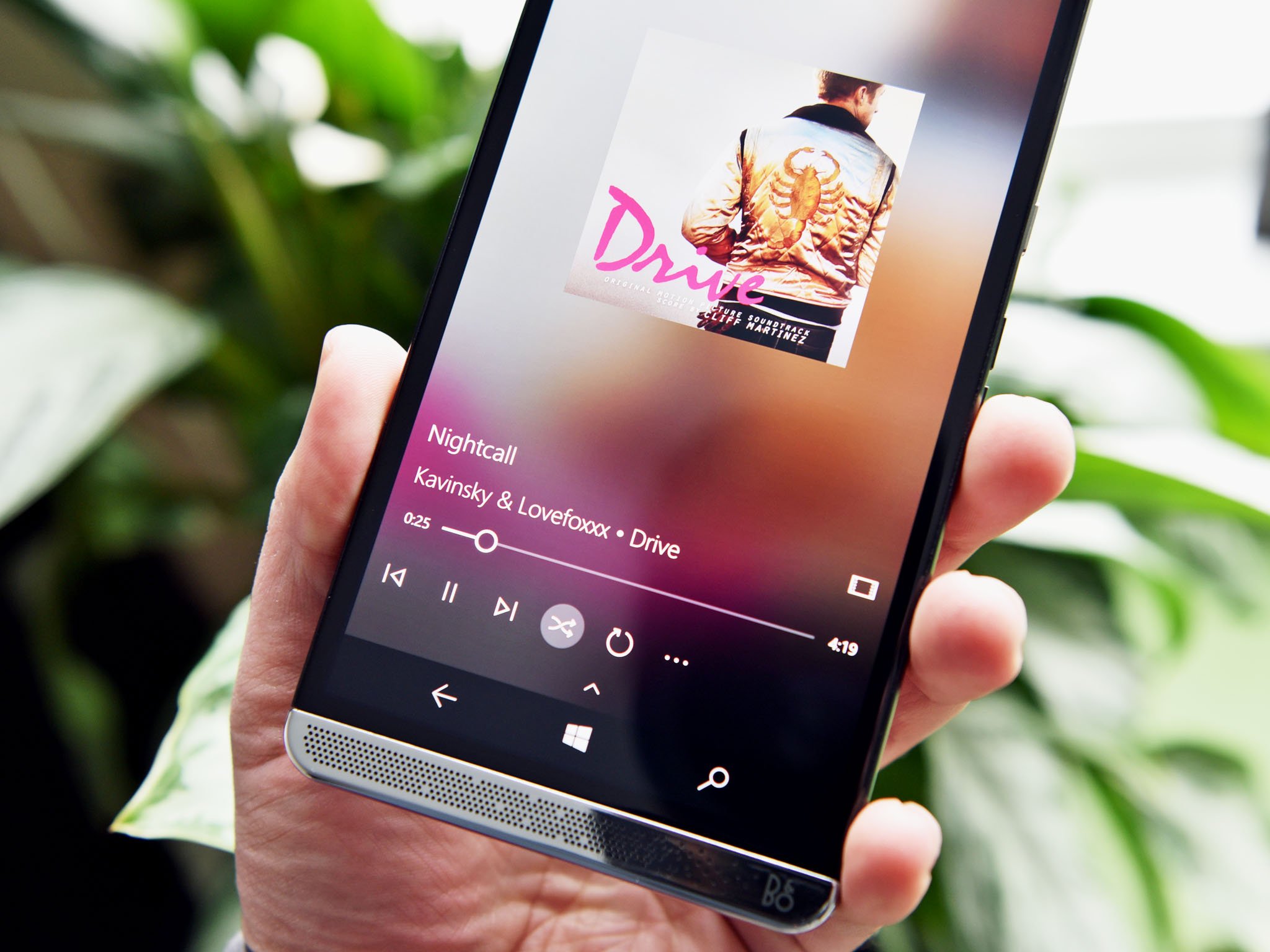
The best desktop apps in the Windows Store are generally third-party solutions for services that are available, fully-featured, on the web. For example, Readit for Reddit and MyTube! For YouTube. The same is true for first-party apps. Facebook, Instagram and Twitter generally have better experiences on the web than they do in their respective UWP apps, making them an unnecessary, often debilitating hoop to jump through for many. Most modern TVs come with video apps and media casting baked in, so it's not even like you need a laptop or an Xbox One for many of those features anymore. It's nice that we can get UWP apps on Xbox One, but the focus there is always going to be on games, especially now that the removal of Snap Mode has gutted its multi-tasking capabilities.
UWP on the desktop competes with the web, and in that endeavor, it will never win.
UWP apps on the desktop compete with the web, and in that endeavor, they will never win the fight. Not every service has a website, but as "universal" as UWP aims to be, on a desktop, it'll never be as universal or as up to date as a website can be. Websites can be designed to function on virtually every modern platform, with little difference between the major web browsers. Instagram might not allow you to upload from a browser, but there's no real reason it couldn't include this feature down the line, making the Windows 10 apps, once again, pointless.
So far, UWP apps primarily shine on small, touch devices, where web solutions often struggle. Readit, for example, is far better than Reddit's website when browsing on a phone, allowing you to swipe through posts with ease. Getting notifications on a phone, when you're more likely to be mobile is handier than on a desktop, where they're more likely to be a distraction from a more intensive task.
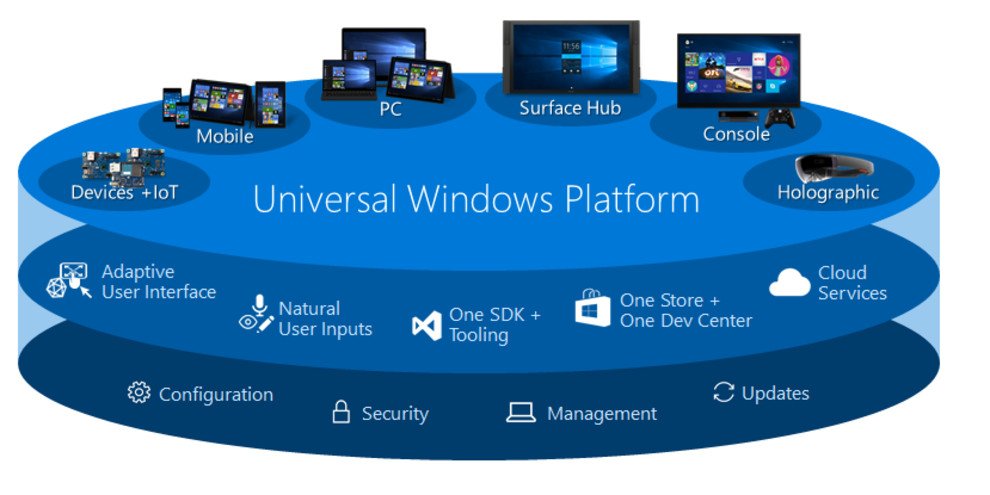
There are multitudinous reasons why mobile is a more powerful endpoint than desktop for UWP apps, even when you ignore the install base. Apps on your phone command more of your attention than the multi-task heavy, distraction-laden desktop. Solutions on the phone don't compete with the web to the same extent nor do they compete with the millions of legacy Win32 apps that Microsoft doesn't see a shred of revenue from. If desktop was a truly good environment for these services, the likes of Instagram and Snapchat would have seen their birth on PC, rather than iPhone. Mobile is crushing desktop, and there's nothing Windows 10 can do to stop it.
When it comes to personal, leisurely computing, increasingly mobility is king, and Microsoft knows it. The company went as far as to put "mobile first" in its contemporary motto. So why does the company seem so willing to throw in the towel in this paradigm, which is steadily chomping Windows' market share?
Desktop is becoming obsolete
Despite some amazing hardware from the likes of Dell, HP, Razer and Microsoft's Surface line, the PC market is still in decline, and mobile is to blame. The days of the "family PC" are over, with more and more consumers realizing that they don't need a home PC at all anymore. A high-end smartphone not only gives you access to all the most important services, but it also contains all the latest social fads and entertainment.
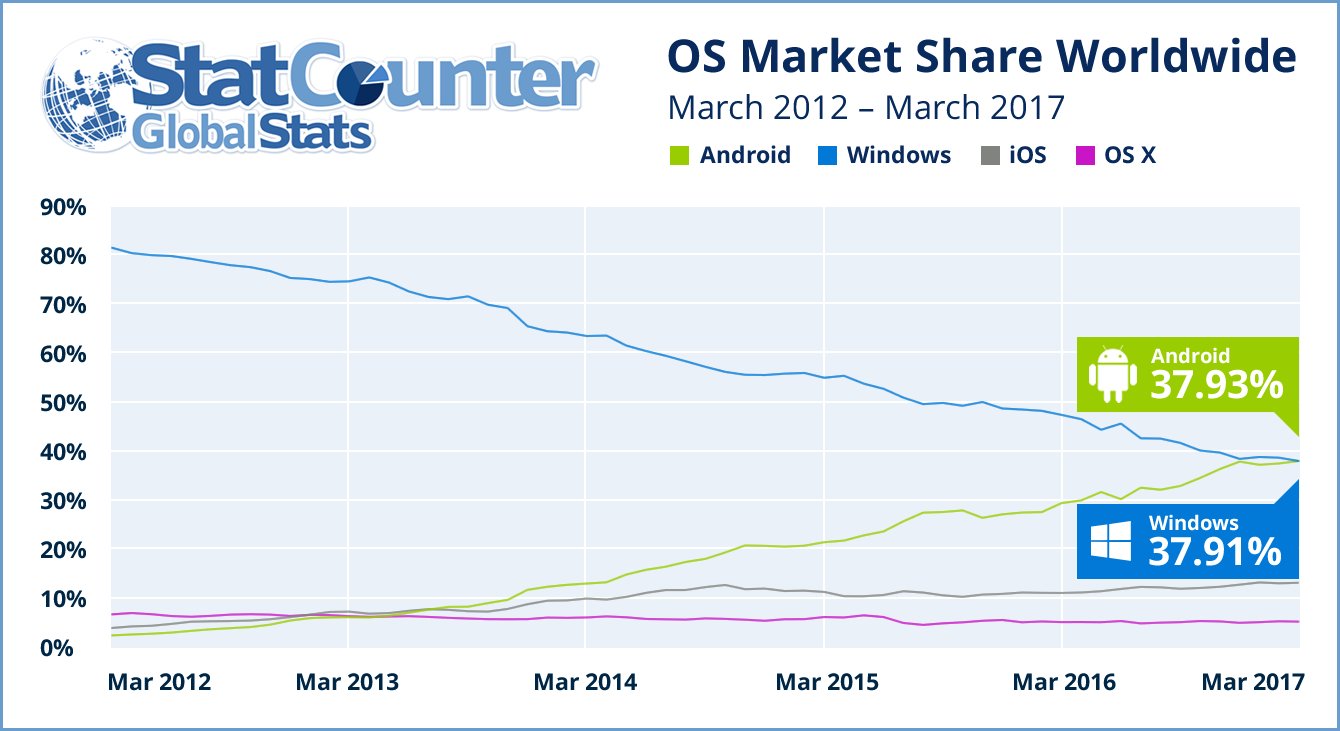
Android might have a whole host of its own problems, but the ecosystem obliterates Windows right now, and the market share says it all. Android has overtaken Windows for the first time as the primary method for accessing the web.
Microsoft's desktop dominance is becoming increasingly irrelevant.
The only thing a PC can do better than a phone, right now, is high-end professional tasks, such as Adobe CC, core PC gaming, and word processing. However, as mobile chips become increasingly powerful, even these features will begin to migrate away from Windows if Microsoft continues to move as slow as it has been.
It's not likely that we'll see the "Android version" of Steam running Battlefield 8 on a DeX-powered Samsung display any time soon, but it's an increasingly possible scenario, especially when you factor in Thunderbolt-powered external hardware for the extra juice. I'm simplifying the complexities, of course, but it's designed to illustrate the fact that Microsoft's desktop dominance is becoming increasingly irrelevant.
Simply put, Microsoft needs to wake up. The idea that Microsoft incorrectly expected Windows 10 to be on a billion devices by now alludes to the fact that the company doesn't even realize how rapidly Windows' significance is fading away.
Windows 10 on ARM might not be enough
Microsoft's plan seems to be focused on bringing full Windows to the mobile space. CShell, combined with Windows 10 on ARM, will make the OS more friendly on smaller screens, mimicking a Windows 10 Mobile-like touch experience. These are great reasons to keep the faith in the idea of Windows mobility, and I've previously outlined my reasons for retaining Windows 10 Mobile as my daily driver before. However, if Build 2017 fails to address these concerns, it could prove to become Windows 10's event horizon for any aspirations to get UWP into the mobile space.
Regarding CShell, Surface Phone, and Windows 10 on ARM cellular PCs, all we have right now are leaks and rumors to go on. Like the Surface Mini, Project Astoria, and various other projects Microsoft has failed to see through to completion, these features might never even see a public release.

Even if Microsoft succeeds in bringing full Windows 10 to a new generation of Snapdragon-powered ultramobile cellular PCs, what guarantee is there for devs and consumers that the company won't abandon these efforts too, as it has with Windows 10 Mobile?
The way Microsoft has handled the slow, miserable death of Windows 10 Mobile is a case study in bad decision making. On the one hand, the company is still shipping modest updates to the OS, throwing existing users a lifeline, while actively denying the platform's existence with the other.
Despite OS updates, it's obvious that Windows 10 Mobile has no future. Microsoft just refuses to admit it.
Despite OS updates, it's obvious that Windows 10 Mobile has no future. Microsoft just refuses to admit it. The Windows 10 Mobile diehards left (including myself) exist only as guinea pigs for the Windows Insider program, while Microsoft strips all mention of Windows phones from its stores and marketing efforts. They have very effectively alienated what fans the platform had while convincing the developer community that the company isn't serious about UWP as a vehicle for cross-device applications. What good is UWP if you're using an Android or iOS phone alongside a Windows PC? I know from my own trips to Redmond that Windows 10 Mobile users are as rare there as anywhere else in the world.
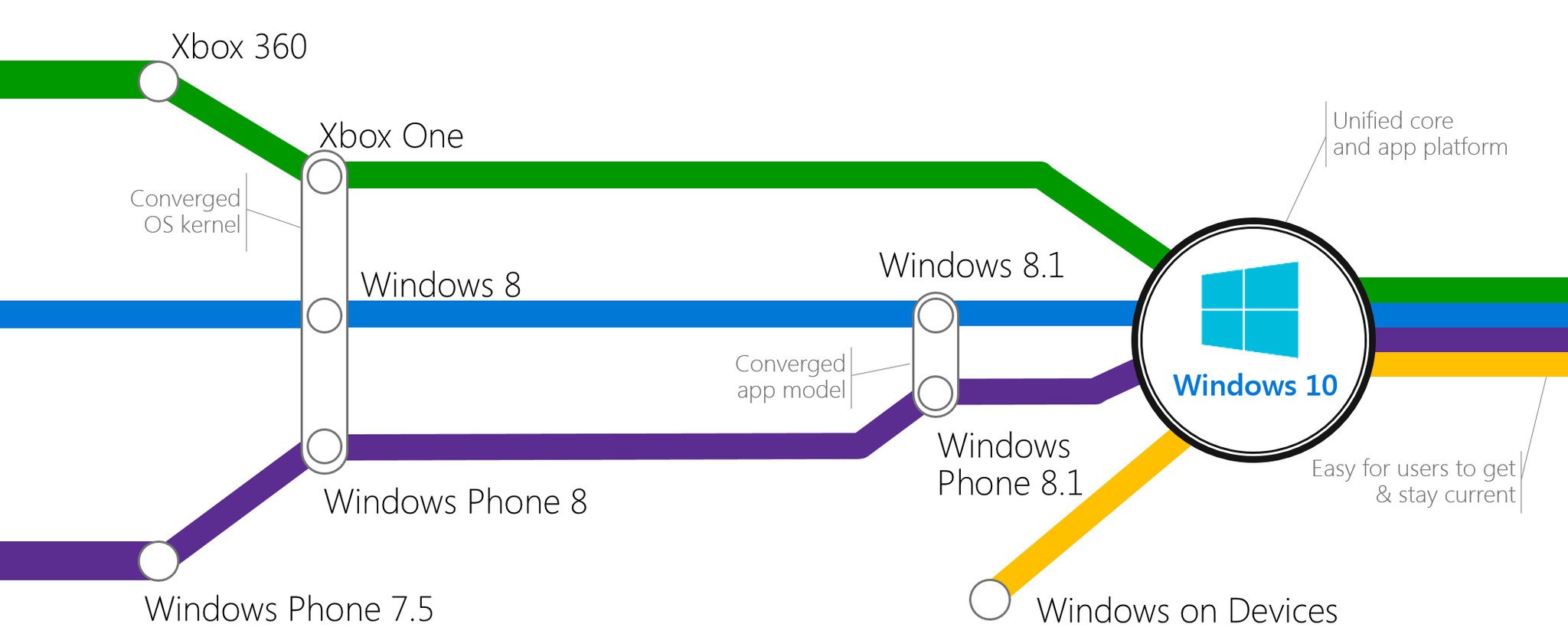
If Microsoft wants Windows to survive, it can't afford to be this unashamedly complacent about UWP's mobile endpoint, because it's the mobile component that makes UWP a viable proposition. Things like Project Rome, the adoption of futuristic and new highly-mobile paradigms, session handoffs between devices, the synchronicity of login details, cross-platform notifications, and, dare I say Continuum. These are the features that make UWP an awesome platform, not the fact that I can get live tiles in my laptop's Start menu. Microsoft should be nurturing the ecosystem for the future, not retrenching.
What happens if (and when) Apple gets it right? Microsoft won't be able to respond ...
It feels almost as if Microsoft is waiting for mobile to come to Windows rather than the other way around. But this is the entirely wrong approach. It's iOS and Android with the more exciting ecosystems, while Windows languishes shackled to its legacy Win32 apps that are atrocious to use on small screen devices, that consumers want to use, rather than have to use, for work and school.
Windows fans often laugh at devices like the iPad Pro, but iOS is vastly ahead of UWP as an adaptive ecosystem purely by the merits of its app breadth alone. UWP might have the feature set needed for apps to roam between form factors, but what happens if (and when) Apple gets it right? Microsoft won't be able to respond because it didn't work hard enough to make the Windows 10 ecosystem exciting.
For UWP, it might be too late
Microsoft shouldn't have waited for a Surface Phone messiah, nor should it be waiting for Windows 10 on ARM with CShell to be complete. It should never have stopped making and marketing contemporary mobile devices, even with the app and share gap, if for no reason other than to build confidence and let the world know that it was still in the game. If, indeed, it is the plan for Windows as a Service to succeed.
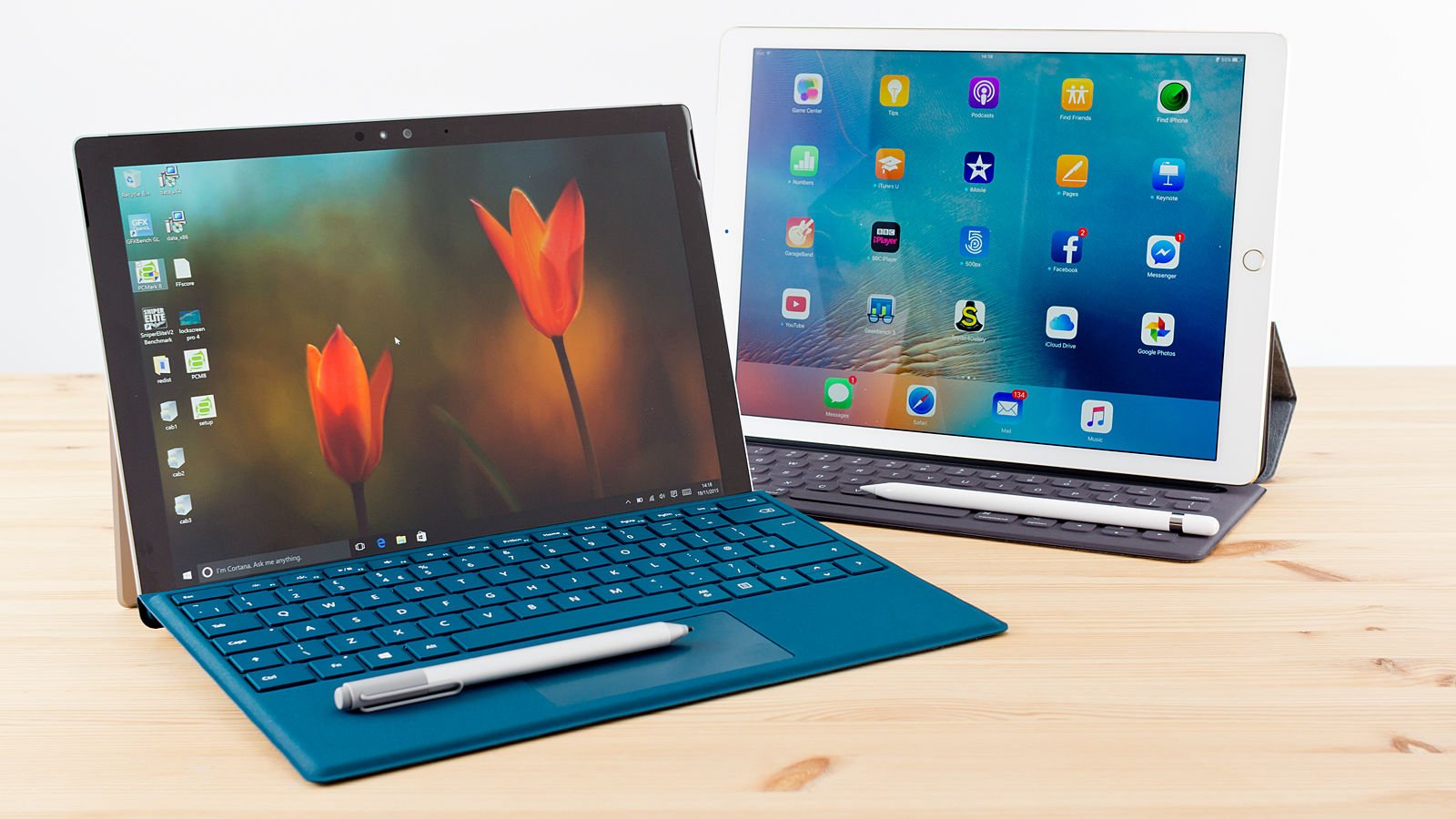
From an outside perspective, Microsoft's strategy for mobility seems to rest somewhere between incompetence and "we have no idea what we're doing." The company has the opportunity to set the record straight at Build 2017, but the huge bout of radio silence has damaged its ability to command any authority in this space.
Windows 10 Mobile should have been a bridge to the next paradigm shift, rather than another fruitless reboot.
Microsoft's vague non-committal comments, the odd leaks we get, and Windows 10 Mobile Fast ring updates simply aren't enough to convince developers, consumers, or the wider tech media, that those scalable UWP apps have more value than Win32 or web solutions. And without confidence in UWP, the entire proposition falls apart. Windows as a Service will flop along with it.
I'm by no means suggesting that Windows 10 Mobile ever had a chance to take on Android and iOS, but sticking it out with Windows 10 Mobile would have shown confidence that Microsoft was willing to persevere in new areas, rather than give up, while it waits for the next big thing.
Windows 10 Mobile should have been an ecosystem-nurturing bridge to the next paradigm shift, rather than another fruitless reboot.
Related reading:

Jez Corden is the Executive Editor at Windows Central, focusing primarily on all things Xbox and gaming. Jez is known for breaking exclusive news and analysis as relates to the Microsoft ecosystem while being powered by tea. Follow on Twitter (X) and tune in to the XB2 Podcast, all about, you guessed it, Xbox!
